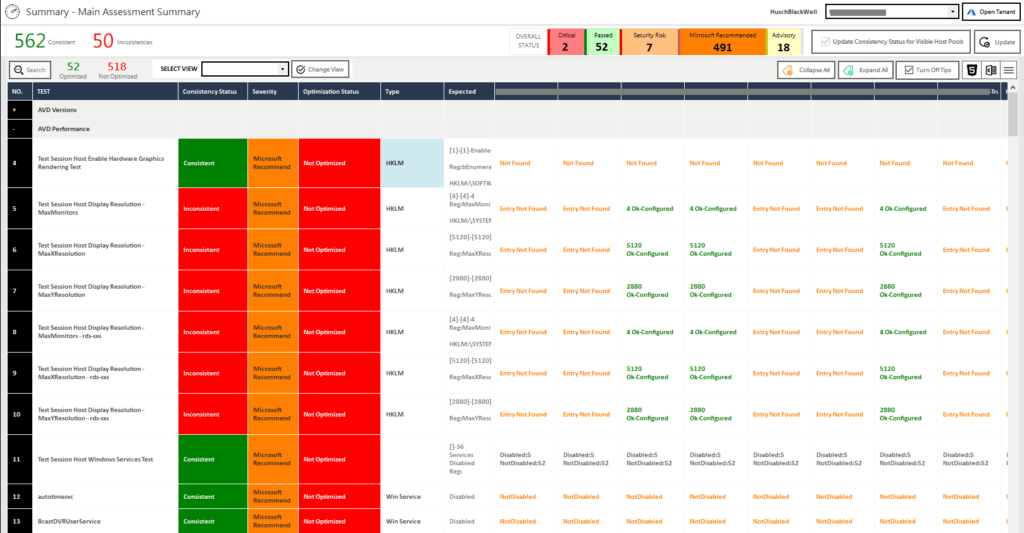You’re working from home, but suddenly your computer crashes, leaving you stranded without access to the files and programs you need to get your work done. Now, imagine being able to seamlessly connect to a virtual desktop, from anywhere, on any device. That’s where Azure Virtual Desktop (formerly known as Windows Virtual Desktop) comes in!<br>
Think of it as the latest and greatest version of Remote Desktop, but with a twist. Instead of using Windows Server, it uses a Windows 10 client operating system, making it behave just like a regular Windows machine. No need to worry about any special requirements for programs like OneDrive and Outlook to operate – everything works just like it should.
But that’s not all – Azure Virtual Desktop even supports audio and video calling with Microsoft Teams. You can stay connected with your colleagues and clients, without ever leaving your virtual desktop. And because it uses Microsoft’s global security gateway, it’s easy and secure to connect from anywhere, on any device, using your Microsoft Work Account.
Say goodbye to the limitations of traditional remote desktop solutions and hello to the flexibility and scalability of Azure Virtual Desktop. It’s the perfect solution for businesses looking to provide remote access to their employees, contractors, and partners. So why wait? Connect to your virtual desktop today and experience the freedom of remote work like never before!
If you’re new to Azure Virtual Desktop (AVD), it can be confusing to know where to start when it comes to connecting to your virtual desktop environment. In this article, we will guide you through the steps to connect to AVD/WVD.
Before we begin, make sure you have the following prerequisites:
There are two ways to connect to the Azure Virtual Desktop, one is by connecting using Remote Desktop Client and the other one is by connecting using the Web Client.
The Remote Desktop Client is a powerful tool that allows you to connect to your Azure Virtual Desktop (AVD) resources from anywhere, using any device. Whether you’re using a Fuse managed machine or need to install the client on your own device, this guide provides clear instructions to help you get started. With the ability to customize your connection options, including using all monitors, the Remote Desktop Client is an ideal solution for accessing your AVD resources securely and efficiently.
This step-by-step guide outlines how to connect to your AVD resources using the Remote Desktop Client:
The first step is to create an Azure Virtual Desktop tenant. Follow the below steps to do so:
The next step is to create a host pool and session host. Follow the below steps to do so:
It may take some time for the host pool and session host to be created.
Next thing we need to do is to add users and assign roles. Follow the below steps to do so:
The next step is to install and configure a Remote Desktop client. Follow the below steps to do so:
The final step is to connect to AVD/WVD. Follow the below steps to do so:
Congratulations! You have successfully connected to AVD/WVD.
2) Web Client:
The web client is a convenient way to connect to the AVD desktop without having to install any additional software. It is accessible from any device with a modern web browser, including mobile devices and tablets. This makes it an ideal solution for users who don’t have the RD client installed on their device or who are using a non-Windows device.
Conclusion:
In conclusion, Azure Virtual Desktop (AVD) is a powerful tool that allows you to
seamlessly connect to a virtual desktop from anywhere, on any device. It offers a flexible and scalable solution for businesses looking to provide remote access to their employees, contractors and partners. With Azure Virtual Desktop, users can enjoy the freedom of remote work like never before. Whether you prefer to connect using the Remote Desktop Client or the Web Client, AVD makes it easy and secure to access your resources. By implementing these simple steps mentioned above, one can easily use the Azure Virtual Desktop.
Using Azure Virtual Desktop Technical Assessment Tool to optimize your AVD environment
While you can deploy AVD in your environment but there are some Microsoft Recommended settings that every AVD environment should apply. Our SmartProfiler AVD Assessment tool is designed to perform a complete Technical Assessment of AVD Host Pools and provide an actionable report to improve performance of your session hosts.
